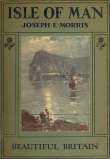قراءة كتاب The Isle of Man
تنويه: تعرض هنا نبذة من اول ١٠ صفحات فقط من الكتاب الالكتروني، لقراءة الكتاب كاملا اضغط على الزر “اشتر الآن"
id="Page_30a" class="x-ebookmaker-pageno"/>

SULBY GLEN AND SNAEFELL.
Snaefell is the chief height in the island (2034 ft.) It is now possible to ascend almost to the summit by an electric railway from Douglas.
Or the visitor may retrace his steps toward Glen Helen as far as the chapel at Baregarrow, passing on the left the Hill of Reneuriling, sometimes called Cronk Urleigh, or Eagle Mount, which is said to have been the original Tynwald Hill of the island. At Baregarrow a lane turns away to the left, and winds up along the southern slopes of Sart Fell (1,560 feet). Whichever route be taken, as we penetrate the hills we realize more and more the real nature of Manx mountains. The central chain of hills extends for about twenty miles from Bradda Head, a sea-cliff (766 feet), in the south-west, to North Barrule (1,842 feet), in the north-east, thus forming a true axis to the island. The range is interrupted, not exactly in the middle, but more towards the south, by the great lateral valley that pierces it completely from sea to sea, and through which run road and rail between Peel and Douglas. South of this great glen the highest summit is South Barrule (1,565 feet); but north of it comes a cluster of much higher hills, the culminating point of which is Snaefell (2,034 feet). These hills are built of slate, like the hills of Cumberland and North Wales, but there all analogy ceases. Snowdon and Scafell Pike are convulsed masses of broken rock, whose black nakedness is not always scantily clothed with a coverlet of bracken, or wiry grass, or sloppy bog-moss. From the foot of the sheer crags extend long acres of scree-shoot, and the hills are further torn in every direction by the deeply furrowed channels of the torrents. In Man the hill slopes are everywhere smooth, and modelled in regular contours; they are clad, no doubt, with moor, and sodden in places with wet, but crag, and scree, and rock, are almost wholly absent. They have even less ferocity than Skiddaw; and Skiddaw, in addition, boasts a splendid "double-front," and a bold black top that excited the enthusiasm of even the town-loving "Elia." What little rock they exhibit is confined chiefly to the sides of one or two glens—Sulby Glen, for instance, which is quite the finest in the island—and to the beds of mountain streams; but none of this is terrific.



